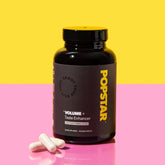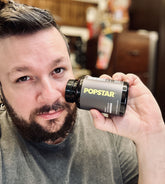Understanding basic medical terms can make conversations with healthcare providers clearer and less stressful. This glossary explains 25 common clinical and diagnostic terms in plain language, helping patients and caregivers navigate medical documents, appointments, and treatment discussions.
Anatomy — The study of body structure and the relationships between body parts. Knowing basic anatomy helps you understand where symptoms occur.
Pathology — The study of disease processes and the structural and functional changes they cause in tissues and organs.
Etiology — The cause or origin of a disease or condition (for example, bacterial infection, genetic mutation, or lifestyle factors).
Prognosis — A forecast of the likely course and outcome of a disease, including chances of recovery or complications.
Diagnosis — The identification of a disease or condition based on signs, symptoms, tests, and medical history.
Differential diagnosis — A list of possible conditions that could explain a patient’s symptoms; clinicians use it to narrow down the correct diagnosis.
Acute — A condition that starts suddenly and is typically short in duration (for example, acute bronchitis).
Chronic — A long-lasting condition that may persist for months or years, sometimes for life (for example, chronic kidney disease).
Benign — A noncancerous growth or condition that does not invade nearby tissue or spread to other parts of the body.
Malignant — A cancerous growth that can invade surrounding tissues and spread (metastasize) to distant body sites.
Metastasis — The process by which cancer cells spread from the original (primary) site to other parts of the body.
Remission — A decrease or disappearance of signs and symptoms of disease. Remission can be partial or complete.
Relapse — The return of disease or symptoms after a period of improvement or remission.
Biopsy — A procedure to remove a small sample of tissue for laboratory examination to help diagnose conditions such as cancer or infection.
MRI (Magnetic Resonance Imaging) — An imaging technique that uses magnetic fields and radio waves to produce detailed pictures of organs and tissues.
CT scan (Computed Tomography) — A series of X-ray images taken from different angles and combined to create cross-sectional images of the body.
Ultrasound — An imaging method using high-frequency sound waves to visualize internal organs, blood flow, and pregnancies.
ECG or EKG (Electrocardiogram) — A test that records the electrical activity of the heart to detect arrhythmias, heart attacks, and other cardiac conditions.
Blood culture — A lab test to detect infection-causing bacteria or fungi in the bloodstream; often used when sepsis is suspected.
Antibiotic — A medication used to treat bacterial infections. Antibiotics are not effective against viruses.
Antiviral — A drug used to treat viral infections by inhibiting the virus's ability to multiply.
Vaccine — A biological preparation that stimulates the immune system to develop protection (immunity) against a specific infectious disease.
Immunization — The process of becoming protected against a disease through vaccination or previous infection.
Autoimmune — Describes conditions in which the immune system mistakenly attacks the body's own tissues (examples include rheumatoid arthritis and lupus).
Inflammation — The body's localized response to injury or infection, often involving redness, heat, swelling, and pain. Inflammation can be acute or chronic.
Tips for using this glossary:
- If you see a medical term you don’t understand, ask your clinician to explain it in plain language.
- Bring a list of questions to appointments to make sure you leave with clear next steps.
- Use trusted sources—such as government health sites or professional medical organizations—when researching conditions online.
This glossary is intended for general education and does not replace personalized medical advice. For questions about symptoms, diagnosis, or treatment, consult your healthcare provider.




















































